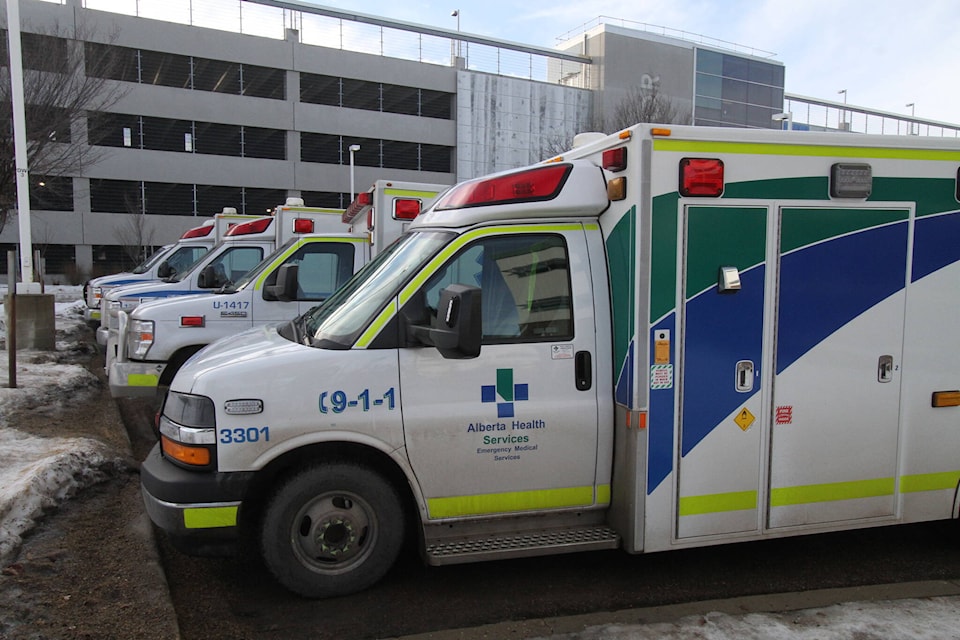Central Alberta’s ambulance system is under “extreme pressure,” potentially jeopardizing people’s health outcomes through a shortfall of emergency vehicles and paramedics, says the paramedics’ union.
Mike Parker, president of the Health Sciences Association of Alberta, spoke bluntly at a media conference on Monday about “two incredibly stressful pandemic years.”
He later decried the ongoing bed and surgical shortages at Red Deer hospital, which often result in a queue of ambulances waiting to have patients admitted. But Parker believes this situation is a microcosm of what’s happening right across the province.
“From reports we are getting… this is not an isolated situation. Some rural communities spend hours or days without having paramedics in their community” because these emergency responders have been redeployed to assist in larger centres, he added.
Rather than focusing on reversing the centralized ambulance dispatching, as Red Deer city council has been doing, Parker believes a more effective remedy to the situation would be to lobby for more ambulances and to keep pressing the government for an independent review of the system.
Red Deer’s lost four ambulances in 2009, leaving just five emergency vehicles from the previous nine, while ambulance calls have been steadily rising.
Last weekend paramedics in both Medicine Hat and Edmonton had to break the best-practise rule of waiting with patients until they are admitted into hospital, said Parker. Instead, the ambulance workers had to take off early because there was no one else to respond to 911 calls.
Parker said they did an “urgent download” — which means leaving patients in wheelchairs in hospital waiting rooms after notifying nurses they must go. It meant disconnecting these patients from intravenous tubes that could be providing them with painkillers, fluids or medications — so it’s not an easy decision to make, said Parker, who has heard that many paramedics are “struggling to keep going.”
Short-staffed, they rush from one high-stress call to another without having enough time off to take care of their mental health, said Parker.
They also often work unequipped to protect even their own health with properly fitted N95 masks, he added.
The HSAA is calling for fitted N95 masks for all front-line workers, as well as adequate days off, and a retention plan so Alberta Health Services can retain as well as attract health-care professionals.
Parker is seeing some colleagues burn out after five years, cutting short careers that used to last 20 or more years.
He believes word of the poor working conditions of Alberta’s emergency responders is getting out and fewer people are getting into this line of work.
Last week, according to the HSAA, there were 266 unfilled paramedic shifts and over 1,000 health care vacancies in Alberta.
Parker said this province used to be an attractive province for paramedics to move to “but now we have to compete (to hire them) in a world market.”
Comment from the Alberta Health Services was not immediately available.
lmichelin@reddeeradvocate.com
Like us on Facebook and follow us on Twitter
